
World
16:01, 08-Aug-2018
11 dead as raging wildfires the size of LA scorches California
Updated
15:55, 11-Aug-2018
CGTN
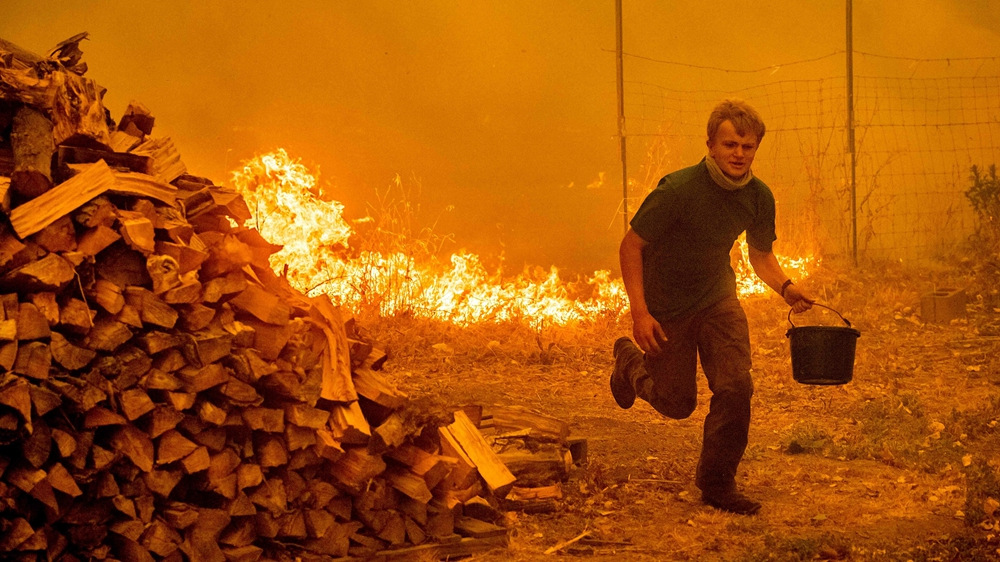
The death toll from a series of infernos that erupted across California last month rose to 11 on Tuesday.
The raging Mendocino Complex fire comprising twin blazes in the western state's north has now ravaged more than 290,000 acres (117,359 hectares) – approximately the size of sprawling Los Angeles – in less than two weeks, becoming California's largest wildfire since record-keeping began a century ago.
Some 14,000 firefighters, including reinforcements from as far away as Australia and New Zealand, are combating the firestorm devouring broad swaths of the state.
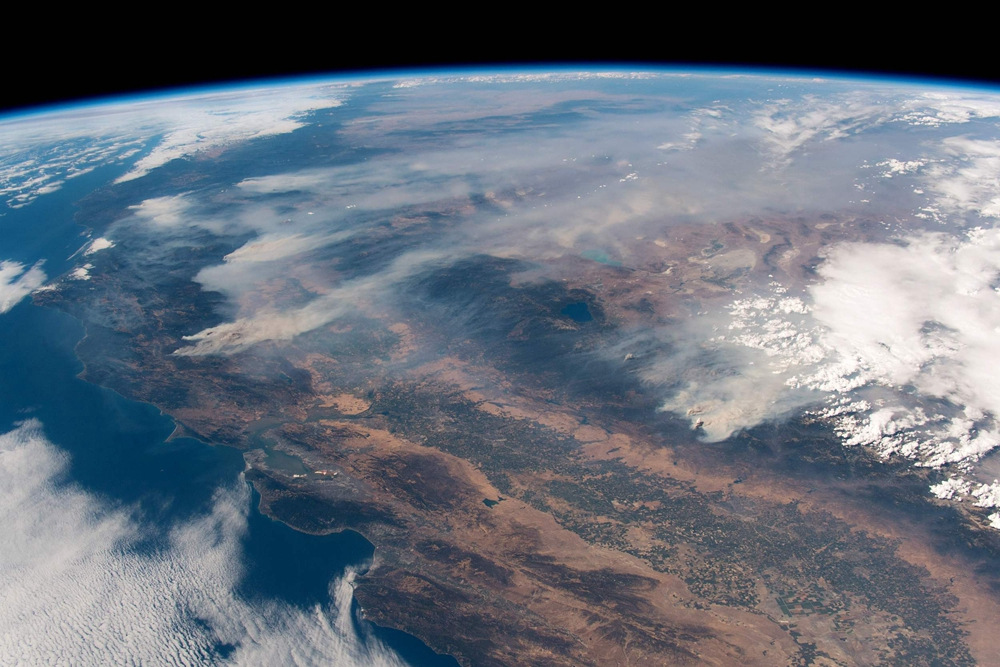
Wildfires in the state of California are seen from the International Space Station, August 2, 2018. /VCG Photo
Wildfires in the state of California are seen from the International Space Station, August 2, 2018. /VCG Photo
Limited access, heavy fuel loads, low fuel moisture and high temperatures were all impeding firefighters' efforts to rein in the conflagration, the state's CalFire authority said.
The overall Mendocino Complex fire has destroyed at least 143 structures, 75 of them residences. More than 11,000 other structures are threatened, according to CalFire.
The Ranch fire, which poses the biggest challenge, has swept across natural barriers like rivers, and a ditch dug with earth-moving machinery.
Helicopters and airplanes, including two massive DC-10s and a 747 jumbo jet, were supporting firefighters by dousing the flames with water.
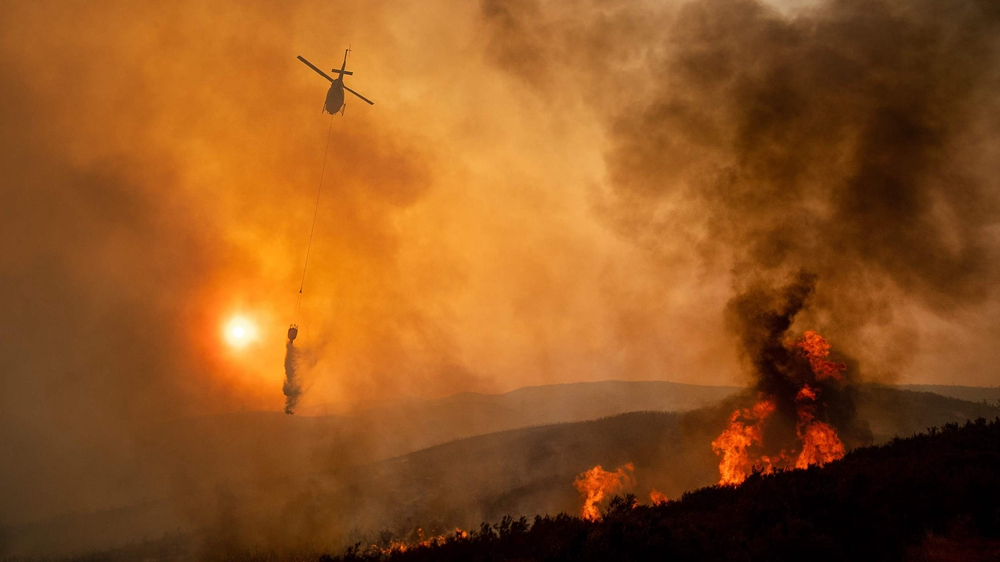
A helicopter drops water while battling the Ranch Fire, part of the Mendocino Complex Fire, near Clearlake Oaks, California, August 5, 2018. /VCG Photo
A helicopter drops water while battling the Ranch Fire, part of the Mendocino Complex Fire, near Clearlake Oaks, California, August 5, 2018. /VCG Photo
Two people have died in that inferno alone, taking to 11 the number of people killed by major fires that are becoming something of a constant in the fire-prone state.
The Carr Fire to the north has meanwhile engulfed 167,113 acres since igniting July 23, killing seven people thus far.
Firefighters have managed to get it 47 percent contained, challenged by varying wind patterns and rough terrain that includes steep drainages.
Another major fire, Ferguson, has left two people dead and forced the closure of part of the Yosemite National Park. It is currently only 38 percent contained.
"This is part of a trend – a new normal – that we got to deal with," Governor Jerry Brown told journalists of the "horrific" wildfires.
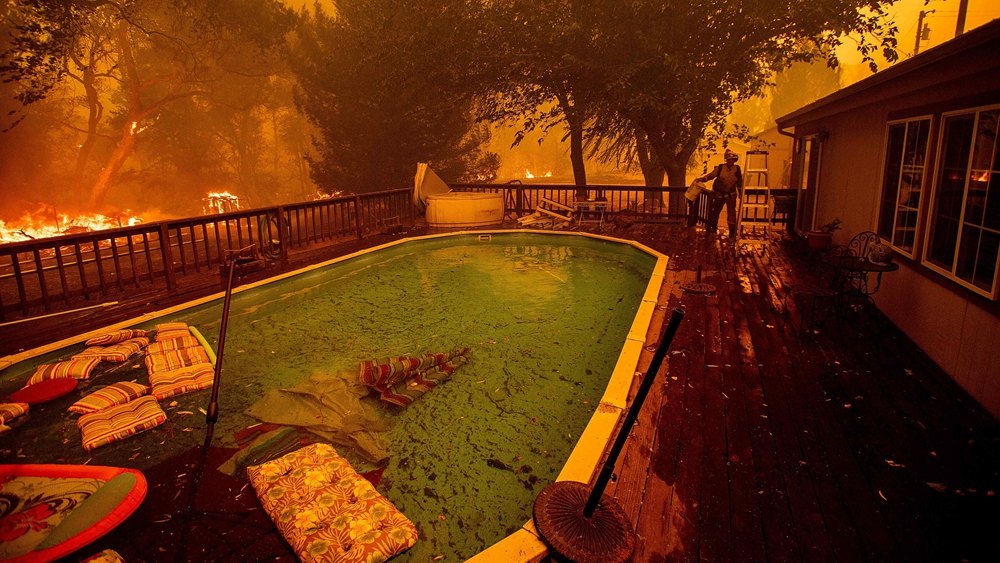
A firefighter gathers water from a pool while battling the Ranch Fire near Clearlake Oaks, California, August 4, 2018. /VCG Photo
A firefighter gathers water from a pool while battling the Ranch Fire near Clearlake Oaks, California, August 4, 2018. /VCG Photo
In the state's south near San Diego, hundreds of personnel were deploying to tackle the fast-moving Holy Fire in the Cleveland National Forest.
After igniting in a relatively small area on Monday afternoon, it mushroomed to 4,000 acres and was spreading unmitigated, according to the US Forest Service.
Two other national forests in the counties of Los Angeles and Ventura were on high alert because of searing temperatures, strong winds and parched vegetation.
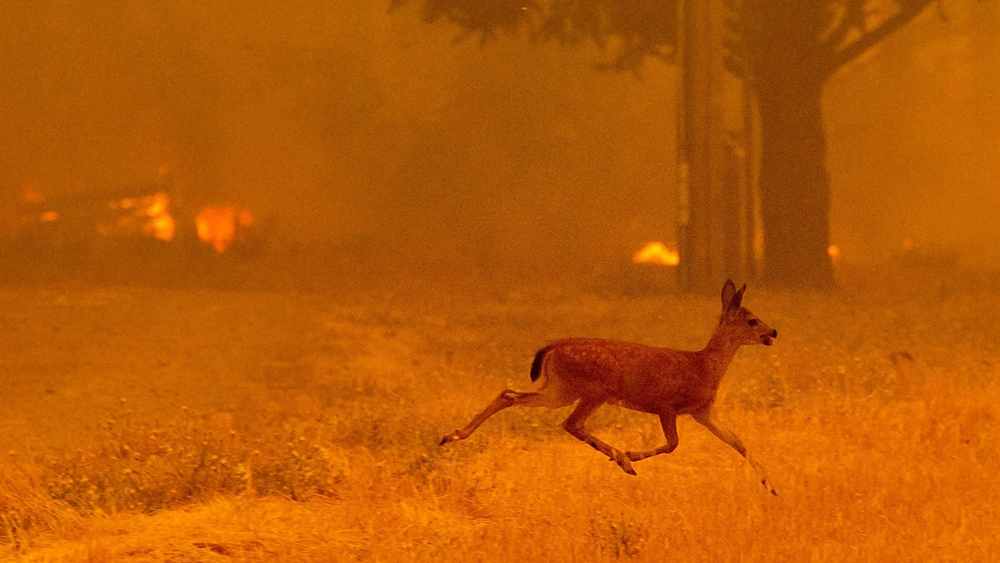
A deer runs from flames as the Ranch Fire tears down New Long Valley Rd near Clearlake Oaks, California, August 4, 2018. /VCG Photo
A deer runs from flames as the Ranch Fire tears down New Long Valley Rd near Clearlake Oaks, California, August 4, 2018. /VCG Photo
"If fire ignition occurs, conditions are favorable for very rapid fire spread," the National Weather Service warned in a statement, saying "extreme fire behavior" could "threaten life and property."
On Monday, the Pentagon said it would send 200 soldiers to assist firefighters in fending off the flames, many of which have encroached on federal lands.
(Top image: A man tries to save his home as the Ranch Fire tears down New Long Valley Rd near Clearlake Oaks, California, August 4, 2018. /VCG Photo)
Source(s): AFP

SITEMAP
Copyright © 2018 CGTN. Beijing ICP prepared NO.16065310-3
Copyright © 2018 CGTN. Beijing ICP prepared NO.16065310-3